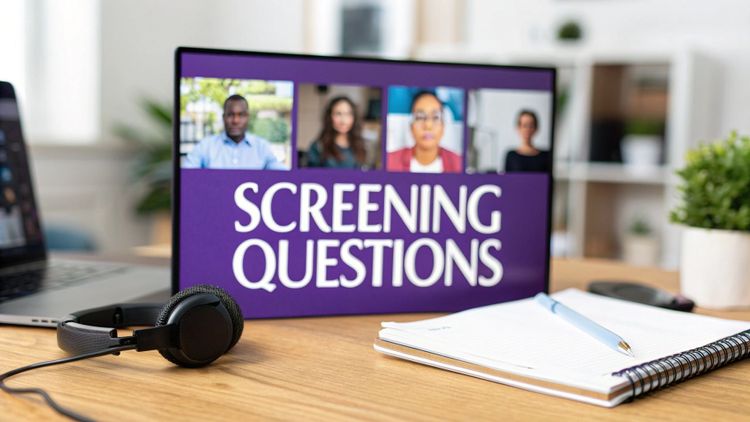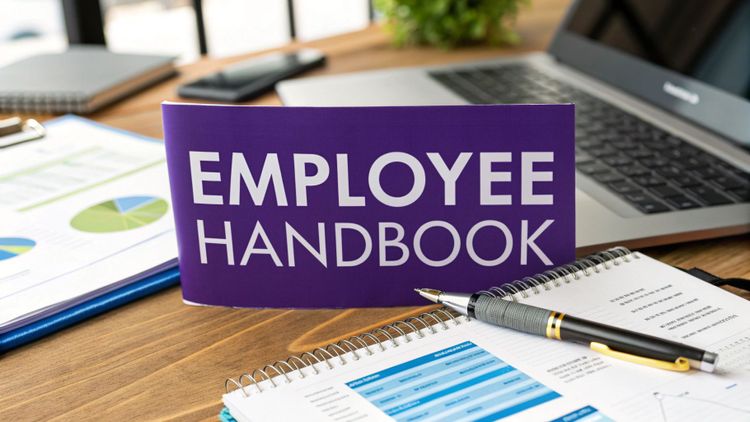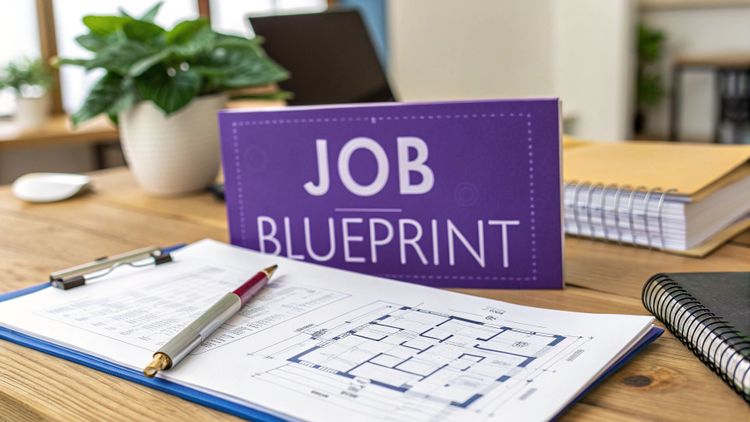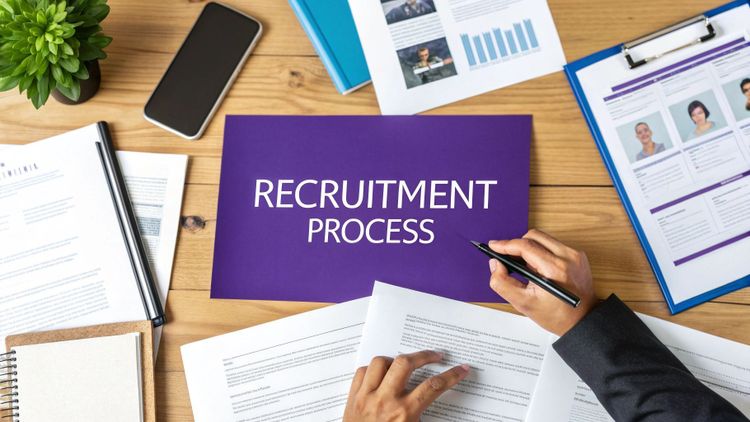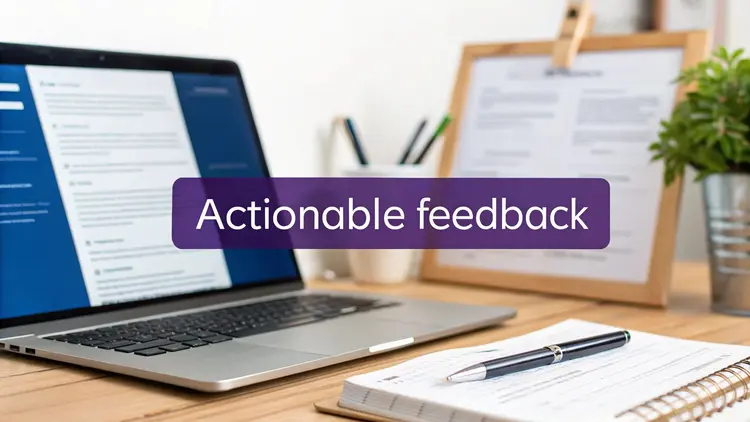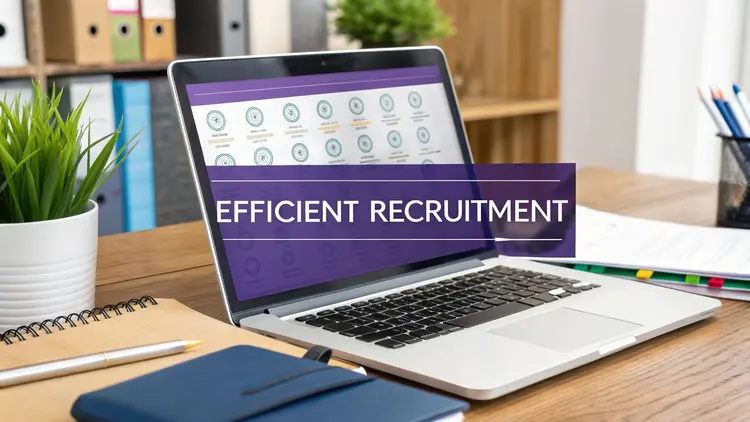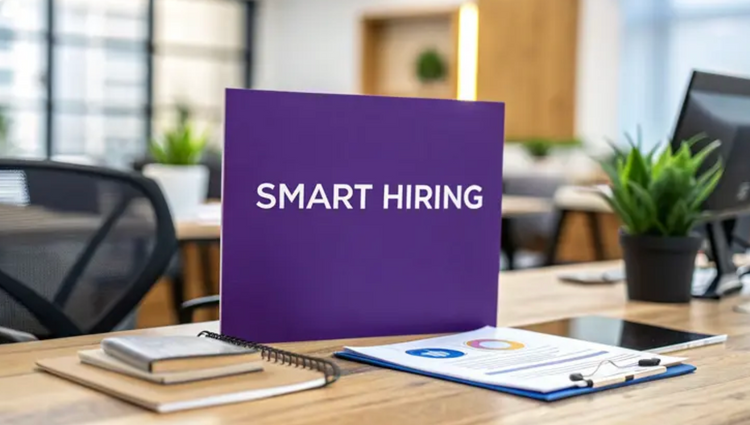HR Processes
The 8 Stages of a Solid Recruitment Process

The recruiting team’s selection is the foundation of the whole hiring process and no effort must be spared on sourcing outstanding talent.
If you want to attract the best candidates, you need to set a solid recruitment process that yields great results every single time.
Here are eight stages of a standout recruitment process that you can use to inspire your own.
1. Designing Your Recruitment Strategy
Your recruitment strategy is the backbone of your initiatives.
If you already have a recruitment strategy, you need to carefully evaluate your team’s performance and see if there are factors you need to remove, improve, or add. If you don’t have a strategy yet, here’s where to start:
- Launch a company assessment
Although you might already have a pretty good idea of what you need to do, no company operation must run solely on sentiments. This stage allows you to quantify exactly what your company’s needs are. - Set SMART goals
Now that you more or less know where you stand, you have a better idea of what kind of goals you should be striving for. Whatever it is, make sure your goals follow the SMART principle. - Set key KPIs to monitor
You won’t get to your goals if you don’t know how to measure your progress. Setting KPIs even before launching the activity will let you know which parts of your strategy are working and which are not. - Outline your methodology
This stage will determine precisely what you will do to achieve your goals.
2. Defining the Needed Role(s)
Now that you have an excellent recruitment strategy, you can focus on your actual recruitment efforts.
Of course, various departments within your organisation will have submitted their requests to fill open positions. However, this task can become tricky if you’re trying to open new jobs you believe your company needs.
Under these conditions, you will need to take additional steps to ensure that you’re hiring for the correct positions. You can do so in three steps:
- Analyse skill gaps
This step involves assessing whether your company has the skills it currently needs and the skills it will need in the future. This involves looking at both the present and future goals of your company and identifying whether your teams will be able to cope with the demand. - Examine performance reviews
Another great way to identify the roles you need is to look at performance reviews, especially struggling teams. Sub-par performance might result from a skills gap or handling too many roles at once, so make sure to scrutinise each one carefully. - Reevaluate current employee job positions
Evaluate whether several employees are currently employed within your company who can perform any needed roles. They might have an underutilised background, or their qualifications might make them suitable for a better position with just a bit of training.
These 3 steps will ensure the most important roles are scoped and advertised first. For the vacancies that make your shortlist, work with your hiring managers to understand their requirements better so you can translate this into a standout job description.
3. Writing an Effective Job Description
Job descriptions are one of those things which are easy to do but challenging to do well.
Anyone can write a job description that will outline all the necessary information. However, if you want to make a job description that stands out, you need to follow these seven steps:
- Think about your ideal candidate
Create a profile of your best candidate and tailor your job description to them. - Highlight your company’s potential
Make potential applicants understand that they will be part of an interesting and dynamic company. - Write in a simple way
Your job descriptions should be easy to read and skim so candidates can quickly evaluate if this is a good potential role for them. - Offer unique or interesting perks
Salary and standard benefits can only go so far so highlight any specific perks to your company - like professional development sponsorship, team experiences or flexible working policies. - Don’t focus too much on qualifications
For many positions, there is little correlation between academic degrees and on-the-job performance so prioritise your required soft skills and attitude ahead of formal qualifications. - Highlight the urgency of your role
Incentivise candidates by highlighting that no vacancy quite like this will come by soon and that there is a strict deadline to apply. - Proofread before you post
It might be a small detail, but nothing erodes professionalism more than misspellings and mistakes in grammar.
4. Distributing the Job Post
Now that you have laid the groundwork for everything, it’s time to actually start promoting.
Depending on the kind role and your company profile, you will want to use a mix of job boards, social networking platforms like LinkedIn, your own website and recruiting firms to varying degrees. Determine where most of your hires come from and aggressively focus your marketing there while keeping a peripheral feel for the rest.
This is much easier with a competent ATS by your side. For example, SeeMeHired will post your job vacancy to more than 20 job boards with just one click.
5. Pre-screening and Screening
With your killer job post distributed far and wide, the applications will come pouring in. You can’t accept all of them, of course, but you have to choose the ones with the best qualifications and character for your company culture.
This is where the prescreening and screening stages come in.
Pre-screening
This stage is the first round of evaluation. Instead of determining the best individuals for your job opening, the pre-screening portion is about focusing on those who meet your minimum requirements.
At this stage, you may want to conduct an initial round of phone interviews to clarify what you see on the resume. Well-thought-out questions can usually root out candidates that aren’t a fit and highlight the ones with the potential to get hired.
Screening
In this phase of the recruitment process, you will shortlist individuals you want to interview among the qualifying applicants of the previous stage. You can base your decision on a set of preferred qualifications, experience, qualities and your initial conversations.
6. Interviewing and Selecting
The interview portion is one of the most crucial parts of the recruitment process. Here, you will get to know the best of the best in your talent pool through a series of in-depth discussions.
When conducting an interview, there are a few things to keep in mind:
- Secure a proper interview space
Wherever you decide the interview will be, make sure it’s formal and quiet. - Familiarise yourself with the candidate’s CV ahead of time
Before going in, review the candidate’s CV so that you have the proper context. - Prepare standard interview questions
Standardising interview questions will save you precious time when conducting multiple interviews. However, this doesn’t mean that your questions have to be boring and uninspired. Feel free to ask unique interview questions when needed. - Don’t be afraid to follow up
Dig deep into topics that you feel are important. - Take all the time you need
You should prioritise interviews above most other office tasks. The cost of a bad hire is immense and you don’t want a rushed interview to be the reason for it. - Tell your candidates what to expect
Uncertainty will be the most nerve-wracking thing for your candidate. To minimize their anxiety, tell them what to expect regarding the interview and next steps.
Did you know you can save interview questions as templates and conduct effective video interviews directly in SeeMeHired? Learn more in a free demo now.

7. Making a Job Offer
There are two factors that stand out the most when making a job offer: your compensation and time to hire.
The first one is obvious enough, but the waiting time between conducting the interview and making the offer is a factor that most hiring managers overlook.
Always think that you’re not the only one who interviewed the candidate. If you wait too long, they may already accept offers from faster competitors.
8. Onboarding
The onboarding period is crucial in cultivating well-adjusting, satisfied and productive employees in the long run, so you mustn’t skimp out. When planning your onboarding process, keep in mind the following tips:
- Communicate with your new hire
Tell them what to expect in the coming days. - Onboarding starts well before day one
You will do well to connect your new hires to their team members before the first day of work to establish rapport early. - Prepare their starter kit
Your new hires will need new resources to do their work well – make sure everything is ready when they sit on their desk. - Regularly gather onboarding feedback
Feedback will help you hone your onboarding process for the next batch of new hires.
Creating a Standout Recruitment Process with SeeMeHired
Creating and maintaining a standout recruitment process is crucial for the long-term health of your company. In fact, it’s not a stretch to say that the future of your company depends on it.
That’s why it’s essential to consider every aspect of your recruitment process. By making sure that each of the stages is fully optimised, you’re better equipped to identify and attract the best possible talent for your company.




